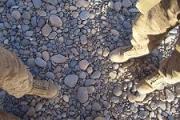We've cussed and discussed just about every conceivable rifle squad design on another thread. And I, for one, have really enjoyed everyone's input.
So moving on to a different take on the same issue: should light infantry organizations organize into permanent squads at all?
I'll start the ball rolling with two links to articles by British author William Owen. Owen advocates a small platoon divided into several big fire teams. The platoon leader could control all the teams himself or mix and match the teams into ad hoc squads for operations as he saw fit. So, using that theory, at different times you could have light squads, heavy squads, mixed squads, two team squads, three team squads, and various combinations.
Here are the links:
Complete article here: http://www.geocities.com/drakonok/Or..._Infantry.htmlA small amount of study will reveal that the vast majority of the world’s infantry units are organised along roughly the same lines. This is often interpreted as being indicative of certain well-founded principles. Close examination shows this to be less than certain.
Complete article here:http://findarticles.com/p/articles/m...n16346580/pg_1The purpose of this article is to describe an alternate tactical doctrine, training, and organization for light infantry units and subunits. The intended purpose of presenting an alternative is not to criticize current or existing concepts, but to aid thought and understanding by showing an alternative that may have some positive merit, if correctly understood and applied.
It seems to me that Owen's proposals would require the addition of one or two more platoons in a company to keep the end numbers roughly the same.
The firing line is ready. Commence firing!















Bookmarks